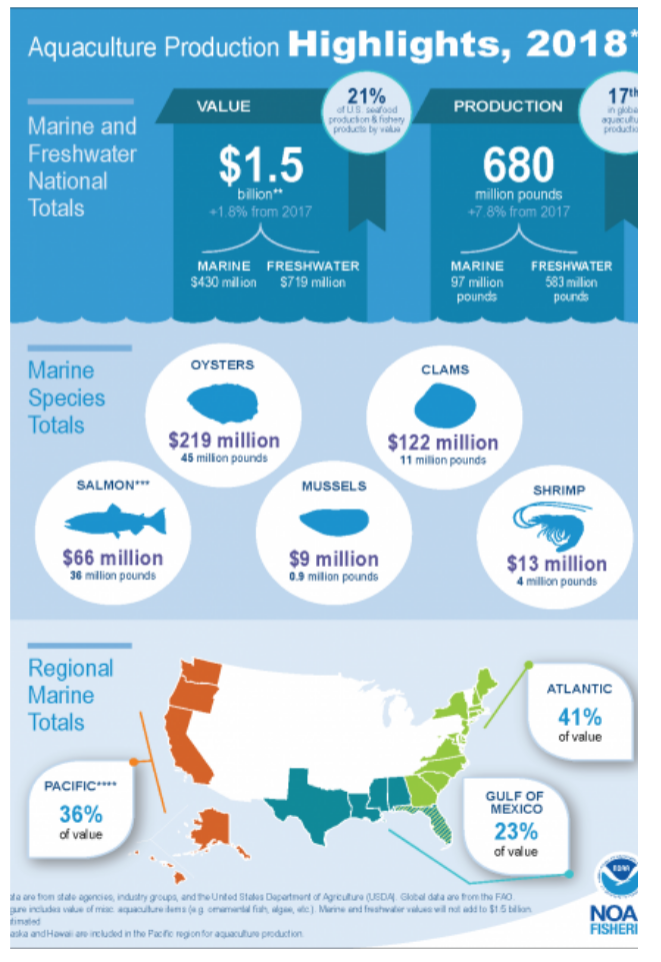Marine aquaculture in the United States contributes to seafood supply,
supports commercial fisheries, restores habitat and at-risk species, and
maintains economic activity in coastal communities and at working
waterfronts in every coastal state.
National

U.S. aquaculture production highlights from 2018, as seen in ‘Fisheries of the
United States, 2019.’
Most marine aquaculture production consists of bivalve mollusks such as oysters,
clams, and mussels. Salmon and shrimp make up most of the rest, but advances in
technology and management techniques are making more species available to the
American public.
By increasing our access to fresh seafood, aquaculture farms support commercial
and recreational fisheries. About 40 percent of the salmon caught in Alaska and an
estimated 70 to 80 percent of those caught in the Pacific Northwest start their lives
in hatcheries—adding millions to the commercial fishery. Aquaculture is also a tool
to restore habitats and species. Hatchery stock is used to rebuild oyster reefs, grow
wild fish populations, and rebuild threatened and endangered abalone and corals.
While the worldwide amount of wild-caught seafood has stayed the same year to
year, the amount raised through aquaculture has risen dramatically. The United
States imports 70 to 85 percent of its seafood, and nearly 50 percent of this
imported seafood is produced via aquaculture. Driven by imports, the U.S. seafood
trade deficit has grown to $16.9 billion in 2019.
In the U.S., marine aquaculture production increased an average of 1.7 percent per
year from 2013-2018. Sales of domestic marine aquaculture increased an average
of 1.5 percent per year in the same time frame.
The U.S. is a minor aquaculture producer, ranked 17th in 2018 on a global scale,
and a compelling case can be made for growing more seafood in the U.S. The U.S. is
the leading global importer of fish and fishery products and a major player in global
aquaculture, supplying a variety of advanced technology, feed, equipment, and
investment capital to other producers around the world.
Full report: Fisheries of the United States, 2019
Last updated byOffice of Aquacultureon 07/08/2021


